A 200-year-old wampum belt, made in Kanehsatà:ke, Que., has spent much of its existence at the Vatican’s museums, across the ocean and thousands of kilometres away.
Last year, the belt, made by Algonquin, Nipissing and Mohawk peoples in 1831, was returned to Canada for 51 days – for a brief appearance at a Montreal museum in the fall – before it was sent back the vaults of the Vatican. There, it rejoined an unknown quantity of other cultural belongings made by Indigenous peoples – many of which groups are calling to be repatriated.
The 1831 wampum belt is the only example The Globe and Mail could find of an Indigenous-made item returned in recent years (albeit temporarily) by the Holy See, the Catholic Church’s government, anywhere close to its original home in Canada.
This despite the fact that promises have been made.
In March, 2022, Inuit, Métis and First Nations delegates travelled to Rome to meet with the Pope and deliver a message on the devastating effects of residential schools, the majority of which were run by the Catholic Church.
During the visit, in a gesture of reconciliation, Vatican officials privately showed delegates a display of cultural items held in the Anima Mundi, an ethnological museum within the Vatican. Among them were carved face masks from Canada’s West Coast, embroidered leather gloves of Cree origins, a colourful Gwich’in baby belt, and an extremely rare, century-old Inuvialuit kayak from the Western Arctic.
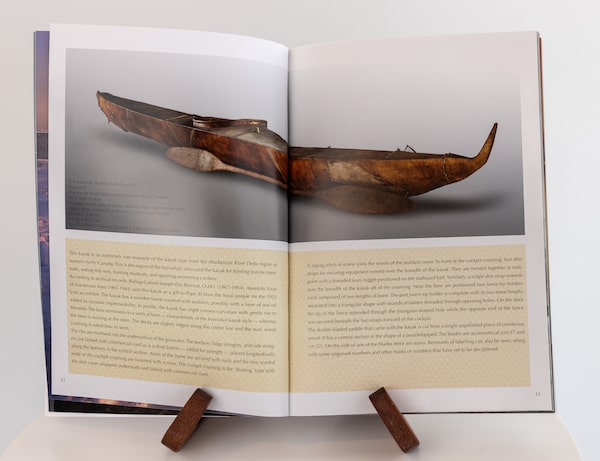
A century-old Inuit sea kayak from the Western Arctic in the pages of a Vatican-issued catalogue called The Americas: Collections from the Vatican Ethnological Museum.Melissa Tait/The Globe and Mail
Following the viewing, Anima Mundi curator Father Nicola Mapelli told delegates he wanted to work with them to learn more about the artifacts, and seek guidance about what should be returned to local communities.
As photographs and word got out about what delegates had seen there, calls for repatriation from Indigenous peoples in Canada intensified.
Then, last April, while aboard the papal plane, answering a reporter’s question about repatriation of Indigenous items to groups in Canada, Pope Francis invoked one of the commandments – “Thou shalt not steal” – to express his agreement on the importance of restitution. “And then, the restitution of Indigenous things: this is going on, with Canada, at least we were in agreement to do so,” he said.
“Sometimes wars and colonization lead to these decisions to take good things of the other,” he said. “To the extent that one can make restitution, let it be done, please, this is good for all. So as not to get used to putting one’s hands in other people’s pockets!”
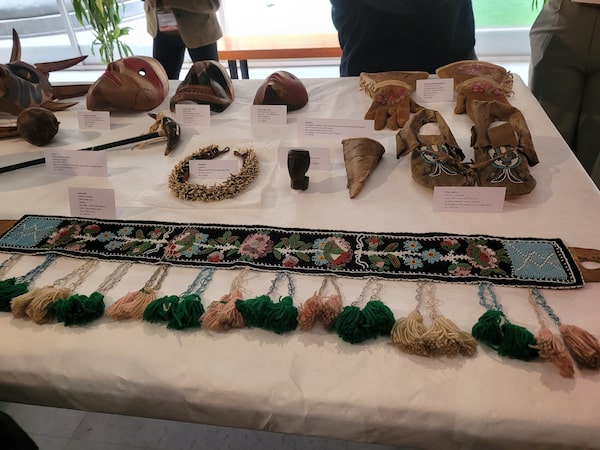
In March 2022, Vatican officials privately showed Inuit, Métis and First Nations delegates a display of cultural items held in the Anima Mundi, an ethnological museum within the Vatican.Tavia Grant/The Globe and Mail
And yet, two years after the delegates’ visit, little has happened, the Globe and Mail has found. The findings are based on dozens of interviews with Indigenous curators, scholars, political representatives, art historians, cultural leaders, past delegates to Rome and residential school survivors across Canada.
As well, The Globe connected with the country’s three major groups that represent Indigenous peoples – Inuit Tapiriit Kanatami, the Métis National Council and the Assembly of First Nations – and combed through documents to get a sense of what has happened over the last two years in regards to repatriation.
After months of investigation, The Globe was unable to find evidence of any cultural items that have been returned to communities, with the exception of the seven-week loan of the 1831 wampum belt to the McCord Stewart museum in Montreal.
Timeline: A look back at the commitments on repatriating Indigenous cultural items
The Globe found no evidence that visits to Canada by Vatican representatives have taken place. And no one interviewed is aware of any direct talks between Vatican officials and Indigenous groups on the subject in the past year.
The Globe reached out to the Holy See press office multiple times – in January, February and March – for comment and to make interview requests, and received no response. The Holy See did not answer any of the many questions The Globe sent about what the Vatican holds, what it has done, or plans to do, in regards to repatriation.
Exactly what the Vatican even holds remains a mystery. According to the Anima Mundi’s website, it houses more than 80,000 objects and works of art – but Indigenous researchers say it’s been difficult to gain access to its collection, or even an inventory.
It’s tricky to call for the return of items when communities don’t know what’s there.
The locked vault – and lack of repatriation efforts – contrasts with a movement under way at other museums. Many institutions – in Canada, the U.S., Scotland and Germany – are returning items taken during the colonial era to their places of origin, recognizing the harms done during colonization and museums’ role in systems that oppressed other cultures.
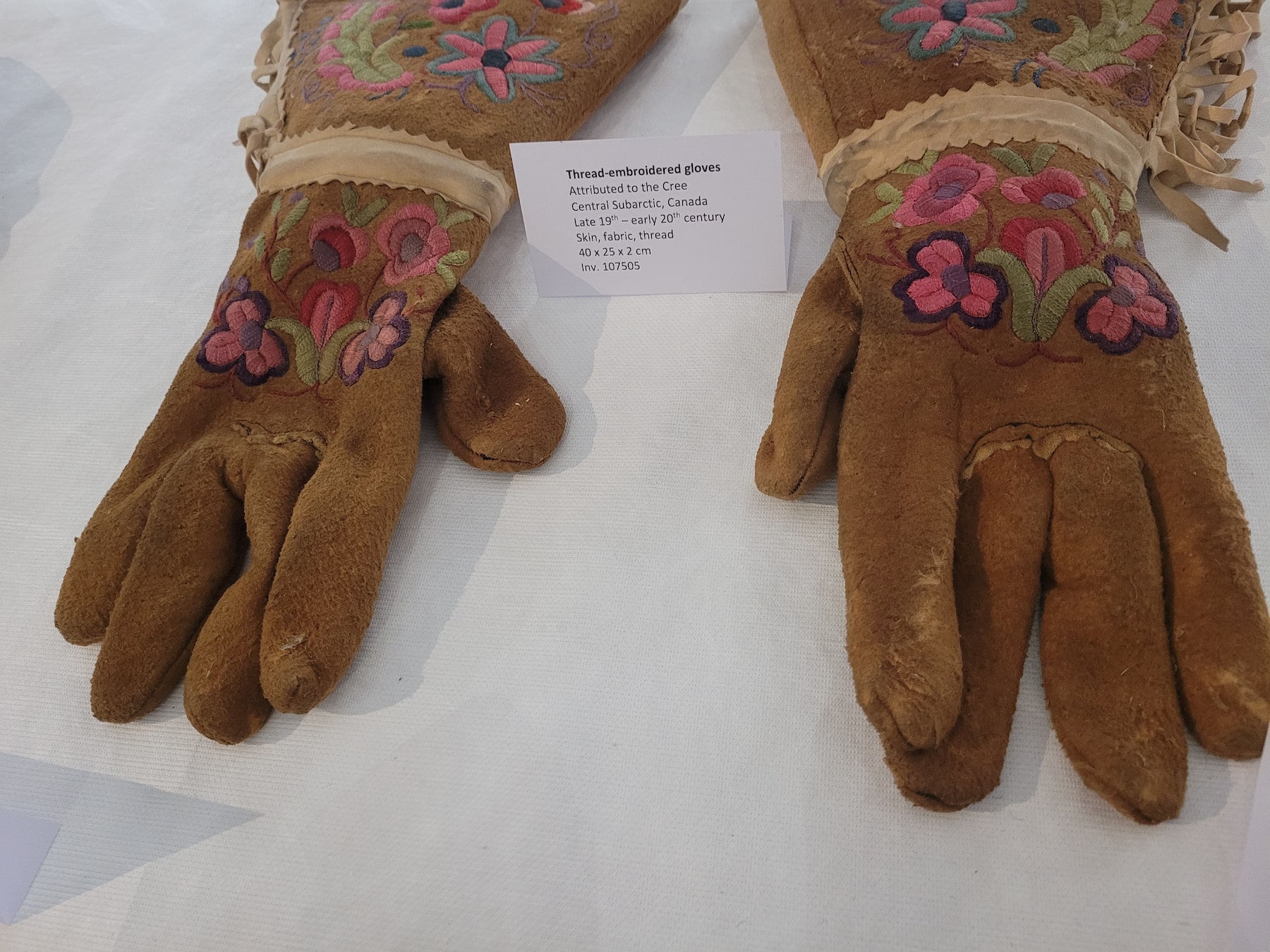
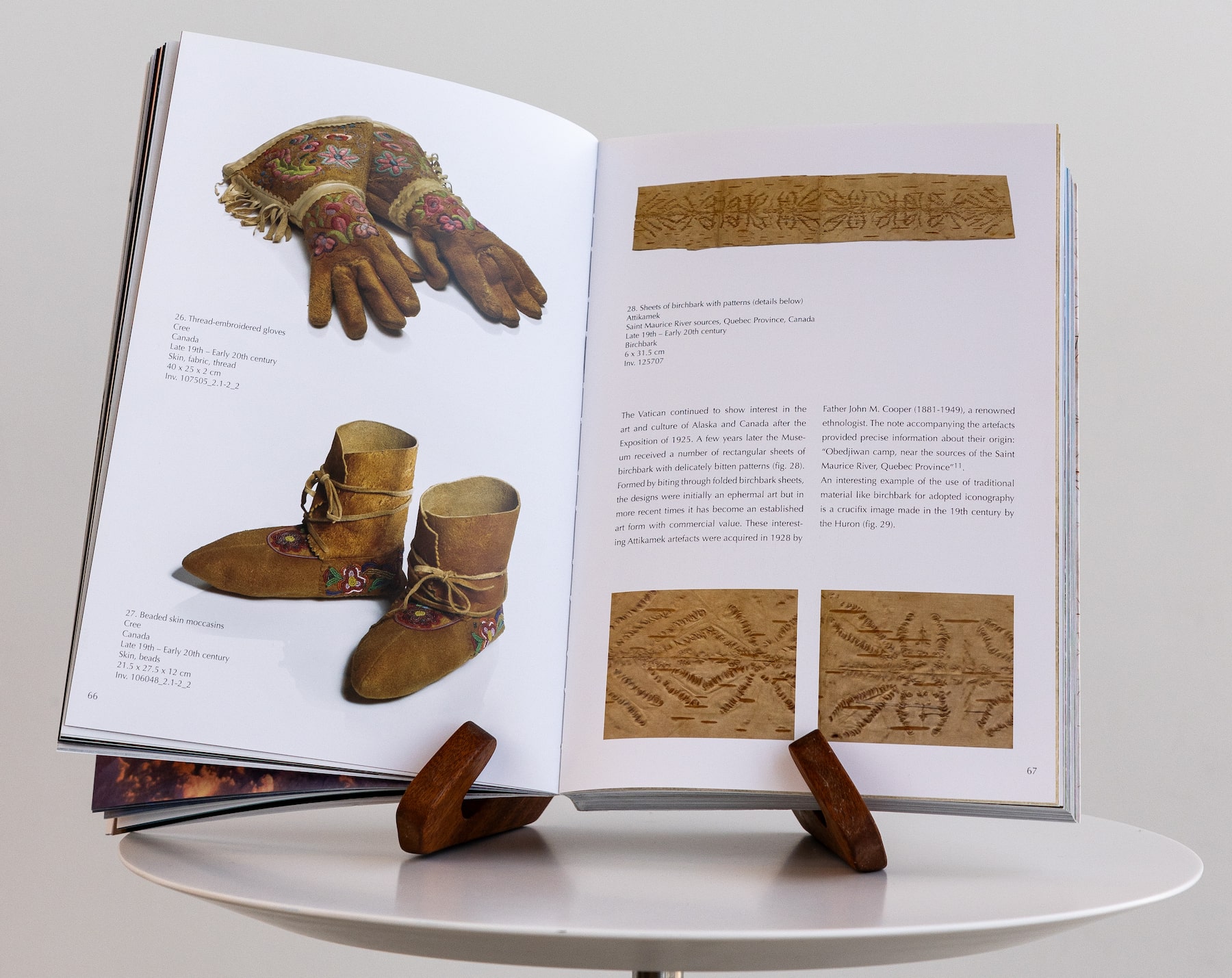
In Canada, the Catholic church made a wave of promises to step up efforts on reconciliation after announcements in 2021 that some First Nations found evidence of unmarked graves of children at former residential school sites. In July, 2022, at the end of his papal visit to Canada, Pope Francis said what took place in the residential school system amounted to genocide.
In that context, many see the return of precious cultural belongings as crucial to healing, and cultural revitalization – or, as residential school survivor Kukdookaa Terri Brown puts it, “restoring the balance.”
These items, says Brown, have spiritual meaning. “We need to discover all of that as nations, because of the genocide we experienced. A lot was lost and the Catholic Church was definitely part of that,” says Brown, who is the founding chair of the survivors circle with the National Centre for Truth and Reconciliation, and a member of the Crow clan in Tahltan Nation, B.C.
Brown says any belongings that can be returned will help – especially for youth who are struggling with intergenerational trauma, but not just for them. “We’re all struggling, really. It’s not like the struggles are over.”
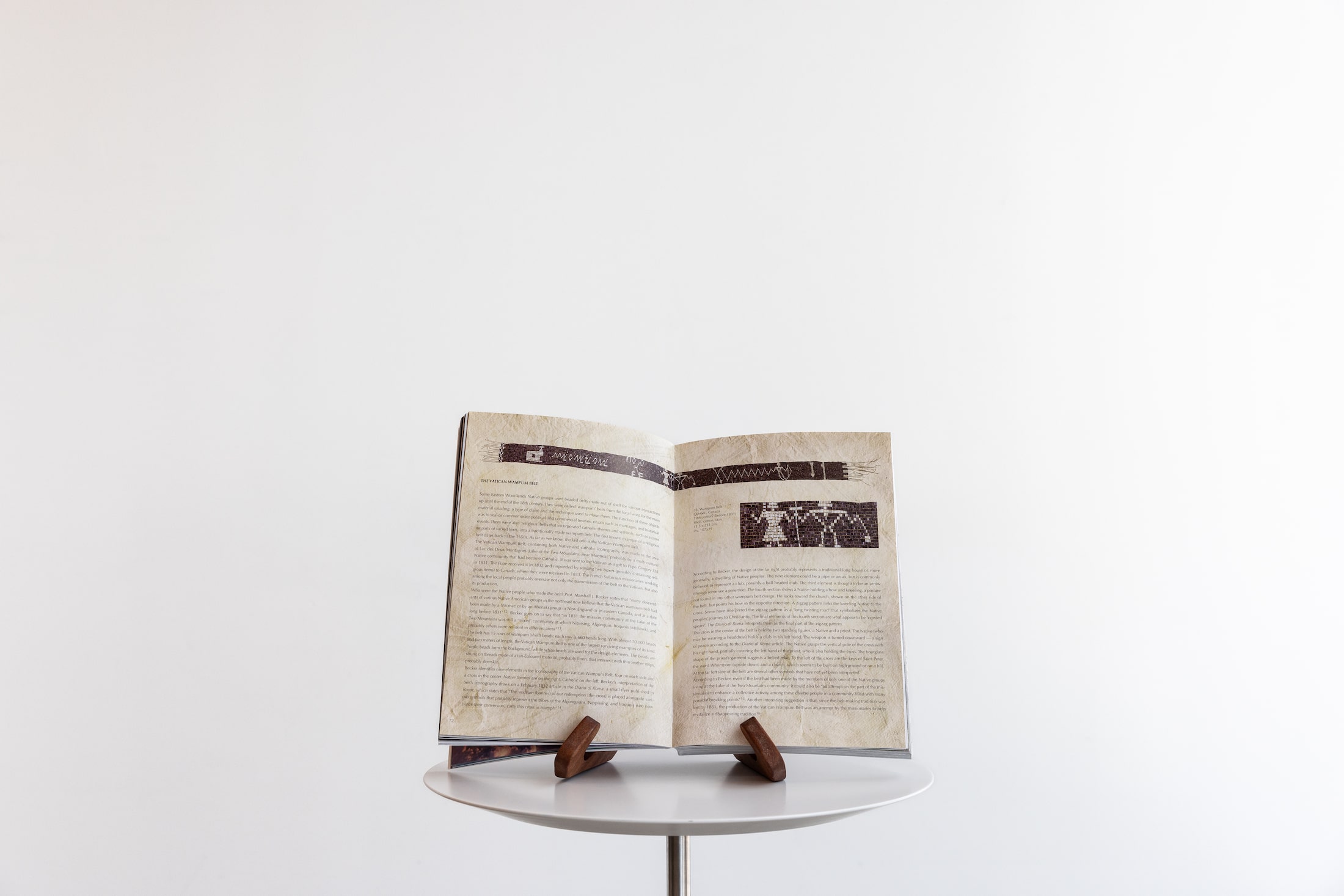
There have been previous, unsuccessful efforts to access Indigenous items at the Vatican, or at least to obtain enough information to understand where they came from and what they mean.
Gloria Bell, whose research at McGill University focuses on Indigenous cultural belongings held in Italy, is among them. Dr. Bell has gained access to archival records and some Indigenous cultural belongings – but says many in the Vatican’s ethnological museum remain inaccessible. Officials have either turned down or ignored requests.
“They used to write back and say, ‘No, we’re not offering that at this time,’ or ‘We’re not allowing researchers in at this time,’ but now they just don’t respond anymore,” said Dr. Bell, an assistant professor of art history who has Métis ancestry. “There is no transparency, or explanation.”
Dr. Bell said this is especially unusual now, given the efforts of other institutions around the world to return items that were taken. “In this age when museums across the world are working to repatriate and rematriate stolen belongings, the Vatican is not doing that. They’re perpetuating this culture of conquest.”
(Brown, and others who descend from matrilineal societies, prefer to use the term rematriation, a reference to the central role that women played in creating art and passing along cultural knowledge).
Several other researchers and Indigenous leaders told The Globe they have asked the Vatican for inventories, and have received either no response, or no clear answers.
The Vatican is in the early stages of building an online catalogue, according to its museums’ website, but it’s unclear when that will be completed or how exhaustive it will be.
One of the few clues to some of what the Vatican holds lies in a 2015 print catalogue called The Americas: Collections from the Vatican Ethnological Museum. In its foreword, the authors cite an estimate from a past museum director that the institution held about 10,000 works from the Americas. The catalogue showcases about 200 items, 17 of which appear to be from Canada, including the wampum belt and the Inuvialuit kayak, along with a model of a dog sled made of walrus ivory, a Kwakwaka’wakw ancestral sun mask and Cree snowshoes of wood and rawhide.
(The Globe asked the Holy See press office for photos of the wampum belt and did not hear back; Montreal’s McCord Stewart Museum couldn’t provide the image of the wampum belt without permission of the Vatican).
Jonathan Lainey, curator of Indigenous cultures collection at the McCord Stewart Museum, thought it would be a great gesture of reconciliation to allow the 10,000-bead belt, considered to be the last known of its kind, to be returned for the exhibit.Evan Buhler/The Globe and Mail
Jonathan Lainey, a curator at the McCord Stewart, was working on an exhibit of wampum belts, which are made of shell beads and used in ceremonies, or exchanged for diplomatic purposes between nations in northeast North America. Despite the Vatican items’ inaccessibility, he woke in the middle of the night with an idea he figured was a long shot: ask the Vatican to loan him the belt.
He thought it could be a gesture of reconciliation to allow the 10,000-bead belt, considered the last known such belt of its kind, to return for the first time in two centuries. After the idea was approved by the museum’s leadership, he obtained a supporting letter from Montreal’s archbishop, and wrote to the Vatican’s curator.
And then he waited. For a long time, he received no reply. After 10 months of e-mails, calls and letters, he finally heard back: the loan was a go.
However, although the McCord Stewart’s wampum belts exhibit was to run from October to March, the Vatican required the lent belt to be returned in early December. “We asked for an extension … because we would have liked for it to be there at least for Christmas time because there’s more visitors,” said Lainey, curator of the Indigenous cultures collection, historian and member of the Huron-Wendat nation. “They said no, it’s not possible … but I mean, they had it for 200 years.”
Hilda Nicholas visited the wampum belt when it was on display. The director of the Tsi Ronterihwanónhnha ne Kanien’kéha Language and Cultural Center in Kanehsatà:ke, Que., said seeing it in person, and thinking of how her ancestors would have touched it, was an emotional experience. She believes having the belt permanently closer to home would be especially meaningful for children.
“So much has been lost in our culture, in our language, and history, and sometimes histories are written different from what we know. … I think it’s very, very important that our young people know our true history.”
That importance to younger generations is part of why museums around the world are finding ways to return items back to the homelands from which they originated. Last year, for example, the Museum of Ethnography of Geneva in Switzerland returned a medicine mask and a turtle rattle to the Haudenosaunee (Iroquois) Confederacy, items it had held for nearly two centuries, acknowledging they were acquired without consent.
The Vatican, too, has repatriated some items in recent years. In 2022, it returned three mummies to Peru. And last year, it sent back three fragments of marble sculptures to Greece.
However, when it comes to many of Indigenous items from North America, the Vatican often characterizes them as gifts. The 1831 wampum belt, for example, is described by the Vatican’s catalogue as being sent to Pope Gregory XVI as a gift. Some scholars dispute the Vatican’s frequent use of the word “gift,” given the power imbalance at the time.
In 1925, Pope Pius XI sponsored the Vatican Missionary Exposition, a major event meant to showcase customs, described at the time, from “the most obscure tribes in the remotest regions of the earth.”
The exhibition displayed more than 100,000 objects, many of them sent at the pope’s request from missionaries from around the world. Of these, 40,000 were kept as what officials said were “gifts” to the pontiffs. The museum still characterizes most of its items on display as gifts.
“To say that these are gifts is a false and simplistic narrative,” said Dr. Bell of McGill, explaining that many items were stolen by missionaries or removed under duress in an era of cultural genocide.
Some of the belongings were sent to the Vatican at the very same time as many Indigenous cultural practices were outlawed in Canada.
From 1885 to 1951, for example, the federal government banned the potlatch ceremony – a traditional gift-giving feast celebrated in the West Coast – as part of brutal government and church assimilation efforts. During that ban, precious ceremonial items such as masks were destroyed, or confiscated and sold.
The Vatican’s catalogue showcases an early 20th century face mask, of what it says is Haida or central B.C. origin, described in the original notes as “a mask related to the potlatch ceremony.” The text offers a brief description of the potlatch ceremony, but fails to mention it was banned.
Most people interviewed for this story do not refer to the taken items as “artifacts” – a word that, to some, conjures static, inanimate objects that sit behind glass. To many Indigenous peoples, they are ancestors, living entities, and sacred cultural belongings.
Some pieces are meant to be touched, and even allowed to decay. Some totem poles, for example, are supposed to disintegrate and return to the earth, said Cody Groat, assistant professor of history and Indigenous studies at Western University.
“The preservation mentality that we have for those in the museum realm doesn’t reflect that,” said Groat, who is Mohawk and a band member of Six Nations of the Grand River. “It’s kind of artificially extending its life, which might not be the intent of that item in the first place.”
“I see them as stolen objects,” said Audrey Dreaver, assistant professor of Indigenous Fine Arts at First Nations University in Regina. Many items were destroyed or seized by religious leaders, the police or the government, such as during the ban of the Sun Dance ceremony, when rattles, pipes and drums were taken.
“I think it should all be returned. They need to come home,” she said.
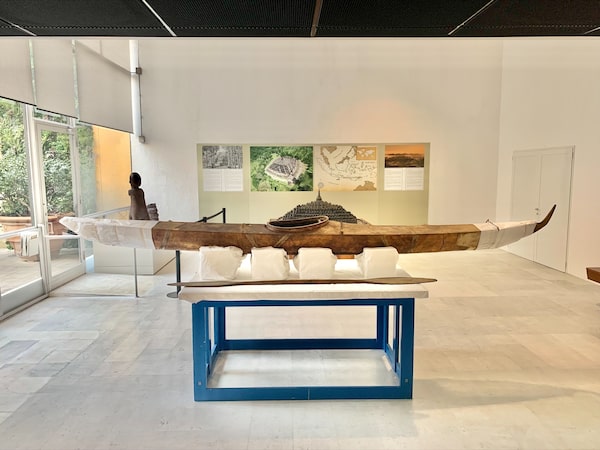
Inuit leaders want the Inuvialuit kayak, held by the Vatican Museums and seen here in March 2022, returned to the Mackenzie Delta region, where it was built a century ago.Willow Fiddler/The Globe and Mail
Natan Obed, the head of the Inuit delegation that visited the Vatican in 2022, remembers the day when he first saw the Inuvialuit kayak in person – and had promising conversations with Vatican officials about its return. “At the time, there was not only an openness to consider, but there was what we felt to be a very genuine offer to do the right thing and to repatriate items of cultural or spiritual significance.”
After that visit, he says, there was very little follow-up. “We [still] don’t know the extent of the holding of the Anima Mundi. We have not had very many conversations with the Catholic Church about this since.”
Obed, president of Inuit Tapiriit Kanatami, said he isn’t looking to repatriate items given freely, but rather is focused on repatriating those items of “murkier provenance,” or that have cultural significance that were not freely given by Inuit to the Church.
Given the lack of any meaningful conversation, he said, “our understanding, at this moment in time, is the Catholic Church does not intend on living up to its promise to repatriate items the Inuit requested be repatriated.”
The Inuvialuit Regional Corporation, which represents Inuvialuit (Inuit of the Western Arctic), echoed Obed’s call in an e-mail: The IRC “is interested in the repatriation of all cultural artifacts, including the kayak, that have been removed from the region as we work to preserve and revitalize Inuvialuit cultural identity and values within a changing northern society.”
Although the IRC says they haven’t been in direct contact with the Vatican, they have heard from the federal government and were told Canada has been in touch with their Vatican counterparts.
Cassidy Caron, president of the Métis National Council, said the council has asked repeatedly for a list of what items are held in Anima Mundi, and not gotten clear answers. There’s been “no movement on those pieces,” she said.
Assembly of First Nations National Chief Cindy Woodhouse Nepinak said the AFN has not yet had a repatriation dialogue with Vatican officials. She urged them to consult with First Nations on the most appropriate way to return items. “All these cultural artifacts are sacred to our people and inextricable from our history, traditions, and ceremonies,” she said in an e-mailed statement.
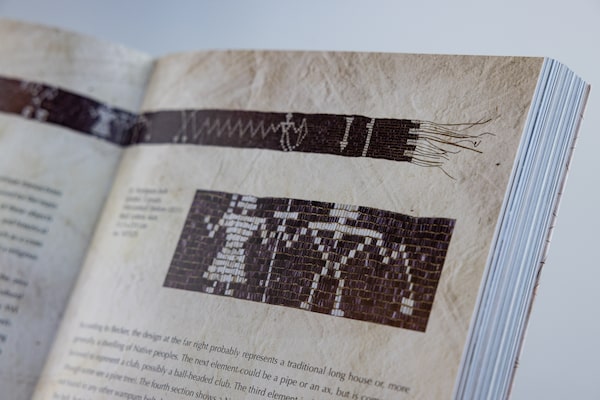
The Canadian Conference of Catholic Bishops said the 1831 wampum belt, as far as it is aware, is the only example of a cultural belonging that has been returned.Melissa Tait/The Globe and Mail
The Globe asked the Canadian Conference of Catholic Bishops, this country’s national assembly of bishops, for an interview with Bishop William McGrattan, the CCCB president. The CCCB declined the request. In an e-mailed statement answering questions about returning items, general secretary Father Jean Vézina said the CCCB “has discussed this matter with the Vatican, and the Vatican has indicated that it will approach any requests that it receives with diligence and seriousness of purpose.”
In response to follow-up questions, the CCCB said it is not aware of any visits to Canada by Vatican museum officials, and that the 1831 wampum belt, as far as it is aware, is the only example of a cultural belonging that has been returned. The CCCB said it has raised the issue of repatriation with the Vatican, and been instructed to redirect those making requests to Vatican authorities.
As for the federal government, Canadian Heritage “respects direct dialogue between Indigenous communities and custodial institutions (such as the Vatican Museums) and supports greater transparency regarding Indigenous artefacts held in collections abroad,” said spokesperson David Larose.
He said the department “remains available to facilitate repatriation initiatives between Indigenous communities and custodial institutions as appropriate, and will work collaboratively with other departments (including the Canada Border Services Agency) in order to facilitate these returns.”
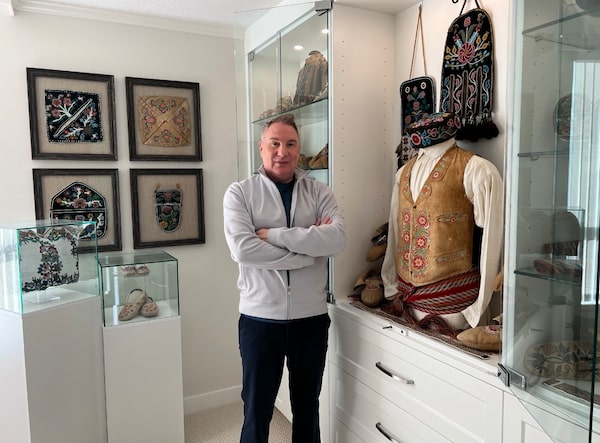
Gregory Scofield, author and associate professor of writing at the University of Victoria, has helped to bring back Métis cultural items from around the world.Supplied
Gregory Scofield has witnessed the power of bringing items home. The author has repatriated Métis cultural items from around the world, to the West Coast, and worked to share their stories.
“It’s really important that people have the opportunity and the accessibility to learn from the grandmother pieces,” said the University of Victoria associate professor of writing, using a term for cultural items usually created by women. Scofield, who is of Red River Métis descent, wrote about them in Our Grandmothers’ Hands: Repatriating Métis Material Art.
The benefit of seeing them, he said, is not just to learn about the way they were constructed, and the materials that were used, but to understand how they reflect the lives of Indigenous women at the time they were made.
”We need to be able to stop looking at them necessarily just as artifacts or historical pieces. We need to start looking at them as stories. Because really, those stories are the stories of ourselves.”
Under the United Nations Declaration on the Rights of Indigenous Peoples (UNDRIP), which Canada is implementing and the Pope has supported, Indigenous peoples have the right to use and control their ceremonial objects; states should enable the repatriation of ceremonial objects and human remains in their possession.
In 2022, the Canadian Museums Association published “Moved to Action: Activating UNDRIP in Canadian Museums,” a report that looked at best practices and issued recommendations to museums on repatriation. The report says Indigenous peoples have the right to know about their belongings, and that they should determine how to best care for items that have been returned.
For its part, the Canadian Museum of History, in Gatineau, Que., has returned more than 1,000 ancestral remains, burial and cultural items to date, and provides an inventory of its holdings to those communities that request it, says John Moses, director of repatriation and Indigenous relations, whose father was a residential school survivor.
Other museums farther abroad have made similar gestures toward Indigenous groups in Canada. Scotland’s National Museum, for example, returned a totem pole to the Nisga’a Nation in B.C. last year, after it was taken without consent in 1929.
And in 2022, the Buxton Museum and Art Gallery in Derbyshire, England repatriated items, on its own initiative, including a carved slate platter to Haida Gwaii. The museum’s Bret Gaunt said they had decided to return their collection of First Nations items, explaining to The Globe that some of those items were taken under duress and that “it’s the right thing to do and it’s the only thing to do.”
When items are repatriated, the impact can be life-changing, says Heather George, historian and executive director of the Woodland Cultural Centre in Brantford, Ont. For residential school survivors and their families, any evidence of their history and experience ”is so important to their healing and to supporting their memories, and their understanding of what happened in their lives.”
Engaging with belongings, she says, creates a connection with one’s ancestors. “It connects us to that time, it shows us cultural continuity, and so it gives us that sense of self. And all of those things are so, so important to our mental health and wellbeing and the healing of our communities.”
When Audrey Dreaver, a Cree woman in Regina, sees cultural belongings in person, she feels overwhelming pride. “We are part of a major legacy of expression and relationships with each other, with the land, and with all the beings on the land. So they carry meaning, they carry incredible power to help us. When we see them, it empowers us to be stronger.”
Colonization, notes Dreaver, was about oppression, and an attempt to remove any sense of identity, autonomy and power. Repatriation helps to not only return items that were taken, but to restore what was lost.
The Vatican “is a powerful institution,” she says. “And they could make a huge difference, if they gave things back. They can have an impact.”
Four voices on repatriation
Nika CollisonAay Aay Gidins/Handout
The Haida, we’ve been involved in what is called in English repatriation, or, rematriation – I’m very glad to hear that word becoming used as well. We call it Yahguudangang, to pay respect. And it involves a heck of a lot more than the obvious, which is why our elders named it ‘to pay respect.’ It’s a huge process … trying to find your ancestors and belongings out in the world.
— Nika Collison, executive director of Haida Gwaii museum and co-chair of the Haida repatriation committee, British Columbia
Kisha SupernantJohn Ulan/Supplied
People tend to think about repatriation as just sending things home. That’s not necessarily always the choice that communities will make, and it shouldn’t be made for them. Different communities, different nations, different cultural protocols exist around different items. In the case of the Vatican, what’s particularly important is how things ended up in the collection and that there’s an attention to what those initial intentions may have been.”
— Kisha Supernant, president of the Indigenous Heritage Circle and Edmonton-based professor at the University of Alberta’s anthropology department
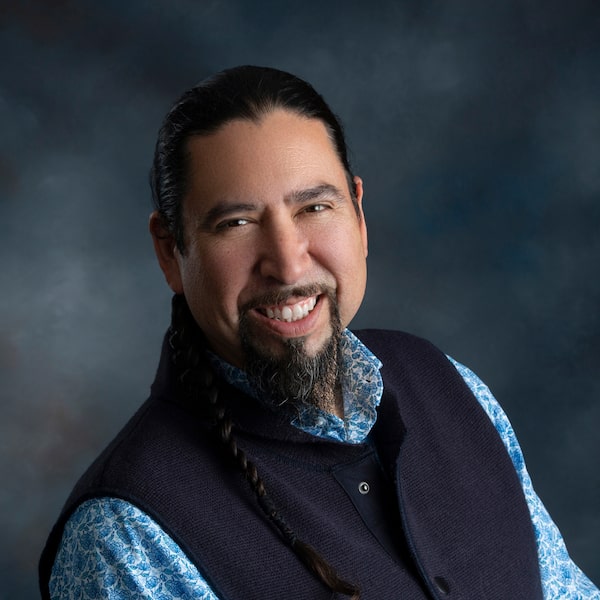
Jeff WardSupplied
When all the kids come through, they’re like ‘wow,’ and they’re looking at many different things, from axes to the many scrapers that we had and whatnot, all the tools, the arrowheads, and just to see them – they light right up. And it allows the kids to ask more questions, and allows them to realize all the great things that we invented, and the great knowledge that Indigenous people carried – ancient, ancient knowledge.
— Jeff Ward, general manager of the Membertou Heritage Park in Membertou, Nova Scotia, which recently received 251 items repatriated from Mount Allison University; he is also a Mi’kmaq knowledge keeper who sits on Canadian Museums Association’s reconciliation council committee
Hilda NicholasEvan Buhler/The Globe and Mail
To be in front of something as precious as this was a bit emotional for me … It felt like a presence. We were hoping that it would be possible to keep it here. Definitely many of our community members here would like to have it back and have it in our communities. It’s part of our history.”
— Hilda Nicholas, director of the Tsi Ronterihwanónhnha ne Kanien’kéha Language and Cultural Center, in Kanehsatà:ke, Que., on seeing the 1831 wampum belt in person



